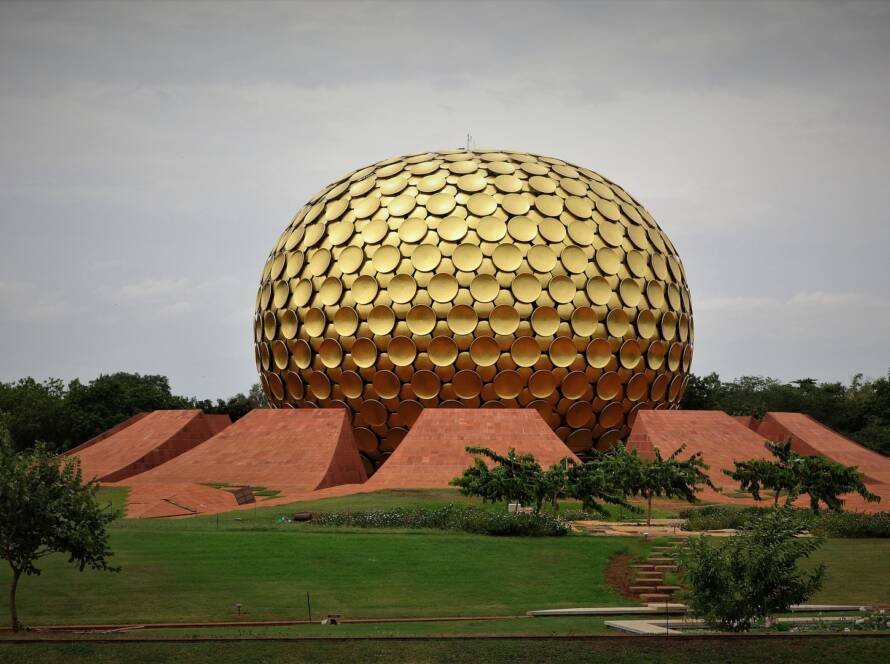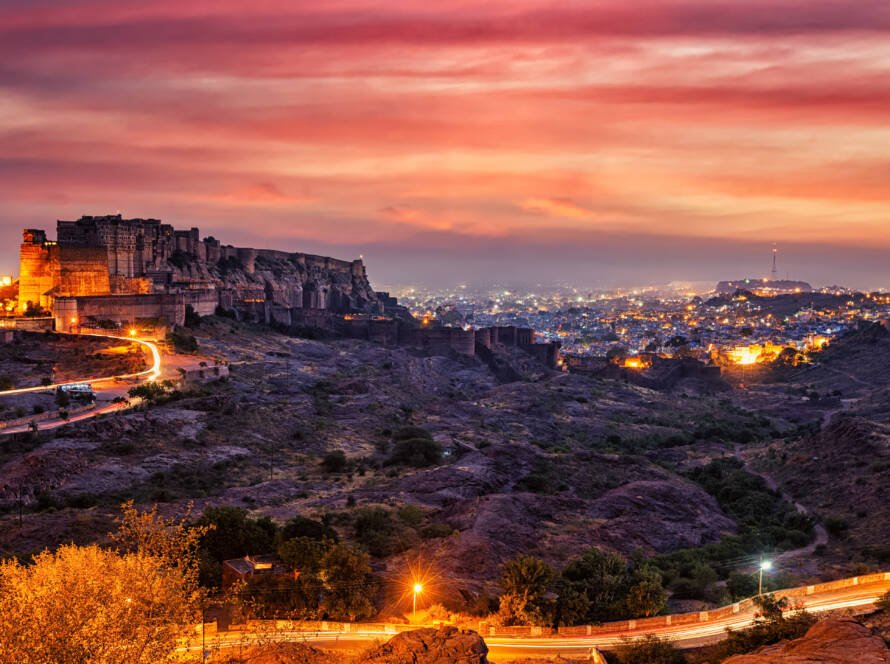Nestled in the serene folds of the Himalayas, where snow dusts cedar forests and rivers whisper through deep valleys, Himachal Pradesh tells its spiritual story not through marble towers or golden domes—but through wood, stone, and silence.
These are not temples of grandeur, but of grace—crafted from deodar wood, capped with slate, and rooted in centuries of ecological wisdom and cultural devotion. The wooden temples of Himachal are among the most striking yet least spoken-of treasures in India’s architectural heritage.
In a land of shifting seasons and seismic tremors, these temples were born of necessity—but shaped with beauty. Using the Kath-Kuni architectural technique, local communities built with what the land gave them—deodar wood and stone—layered horizontally in a way that ensured resilience, warmth, and longevity.
Deodar, the “wood of the gods”, is not just chosen for strength—it is revered. Traditionally, the wood was sourced with reverence from fallen trees or gifted by the forest itself. Slate roofs, elegantly sloped, are designed to withstand heavy snow and rains. These buildings are not just sustainable by modern standards—they are inherently sacred by traditional ones.
Topped with slate roofs, angled to shed snow and rain, and structured to withstand both harsh winters and earthquakes, these temples are not just spiritual centers—they are lessons in sustainable, context-aware design.
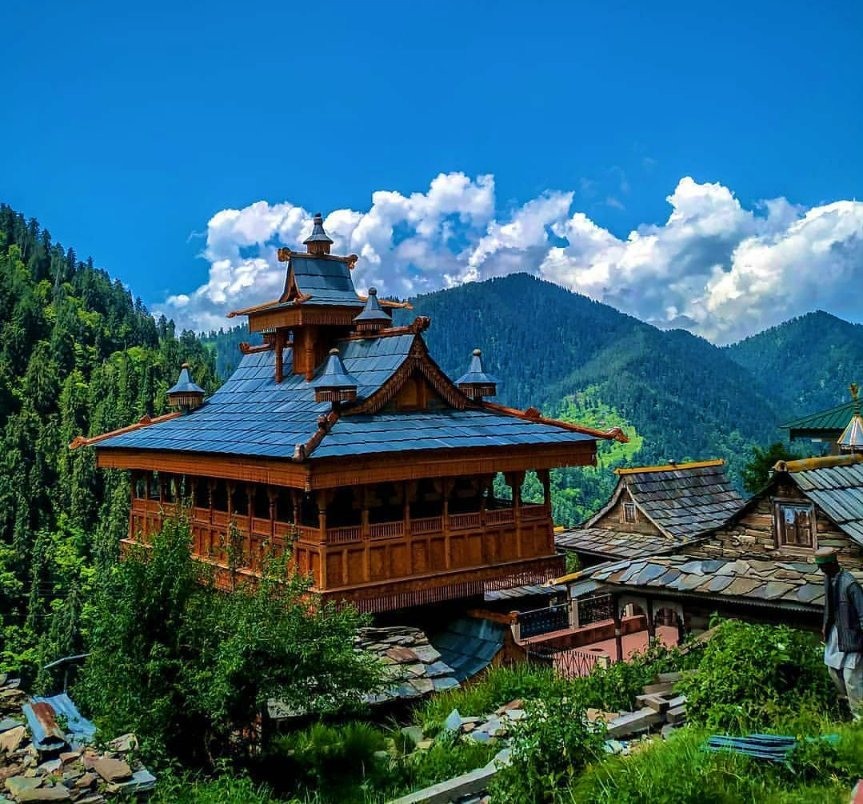
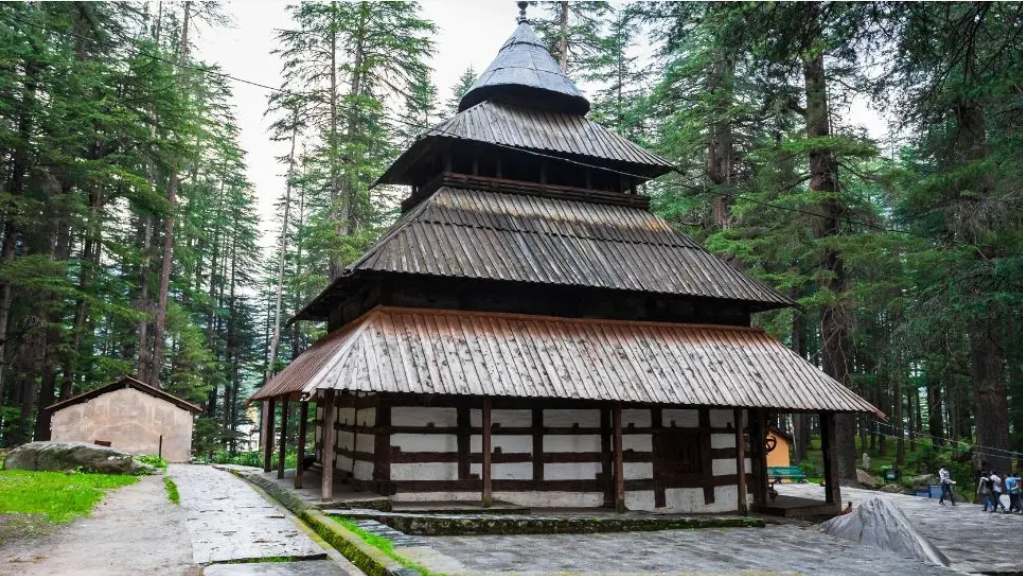
Step into one of Himachal’s wooden temples, and you step into a space where the past is alive in every beam. At the Hadimba Temple in Manali, a striking four-tiered wooden pagoda rises from a grove of deodars, its intricate carvings capturing tales from mythology and folklore. There’s no loud opulence—only a quiet, dignified presence that feels deeply rooted in both earth and spirit.
In Sarahan, the majestic Bhimakali Temple blends Hindu and Buddhist symbolism, standing as a beacon of religious inclusivity and local artistry. Its richly carved wooden façades, golden spire, and tranquil courtyards reflect both spiritual depth and aesthetic excellence.
These temples are living spaces, not frozen in time. They host seasonal festivals, community gatherings, and ancient rituals. Their doors remain open not just to gods, but to generations of villagers, travelers, and seekers.
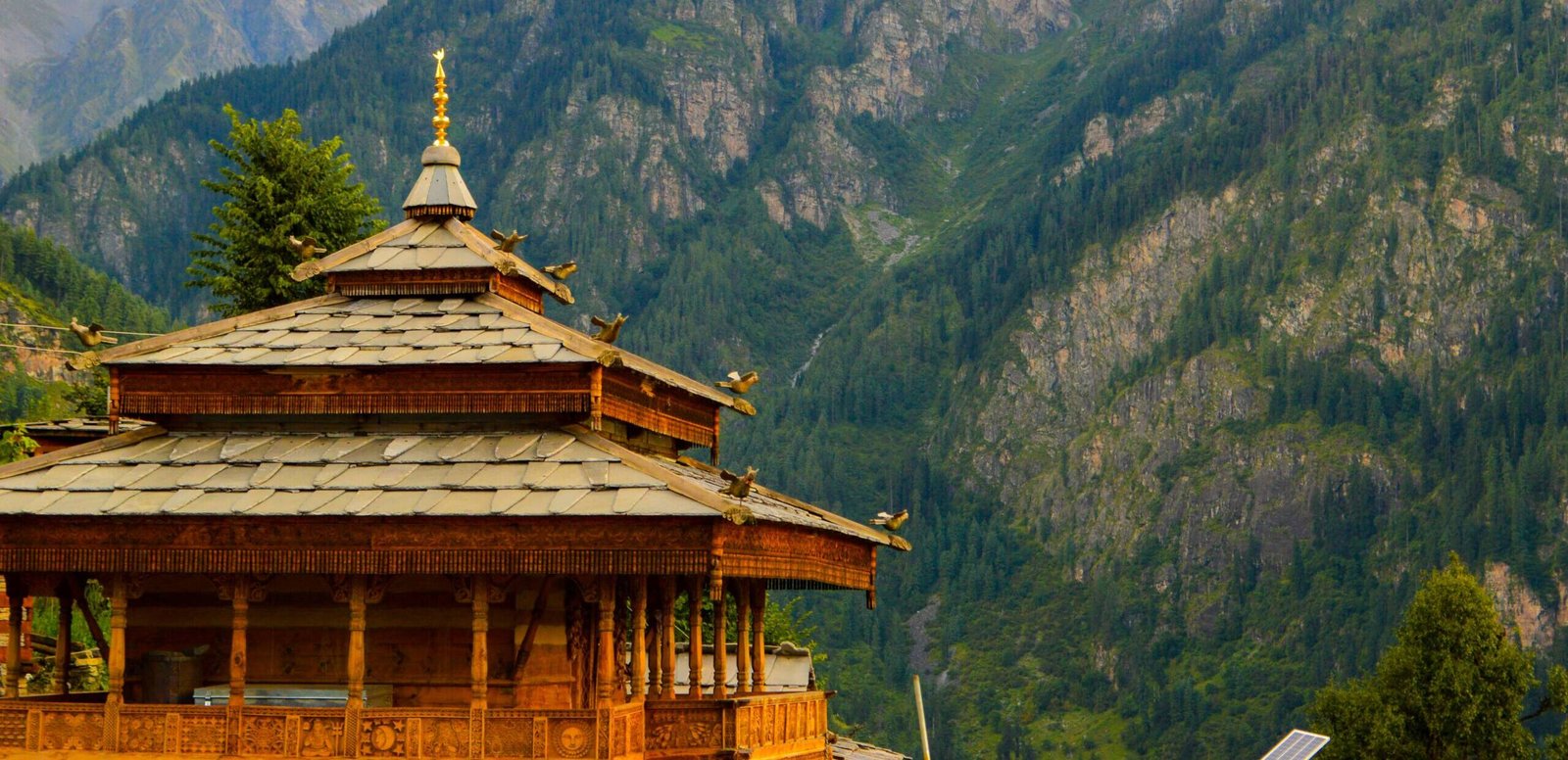
Perhaps the most profound aspect of Himachal’s wooden temples is their philosophical foundation. These structures are not simply eco-friendly by design—they are ecological by devotion.
Everything—from their orientation toward the sun, to their integration with the surrounding landscape—is guided by a deep understanding of nature as sacred space. Rivers are goddesses, trees are ancestors, and mountains are guardians. The temples do not rise in isolation—they are part of a larger spiritual ecosystem, woven into the geography and the consciousness of the land.
This is spiritual ecology—long before the term existed. In an age of soaring skylines and synthetic materials, Himachal’s wooden temples offer a gentle, enduring reminder: that progress without roots is fragile, and that beauty drawn from the earth carries a grace that cannot be replicated by glass or steel.
They show us that tradition can be intelligent, that ancient does not mean outdated, and that the finest expressions of faith often rise not from extravagance—but from humility, harmony, and a deep listening to the land.
To walk through a wooden temple in Himachal is to be embraced by a story—carved in cedar, layered in slate, and told in the quiet language of devotion and design.
These are not just temples. They are living philosophies—standing still, breathing wisdom.

